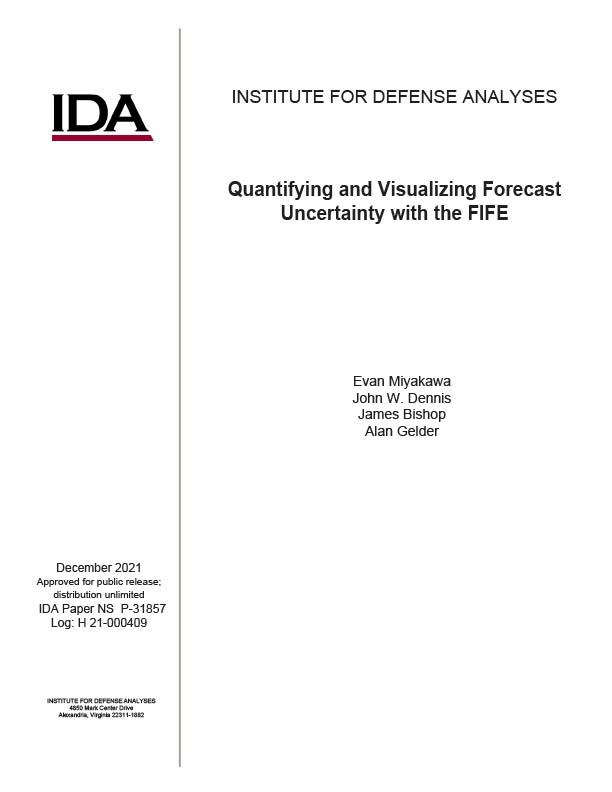Quantifying and Visualizing Forecast Uncertainty with the FIFE
December, 2021
IDA document: P-31857
FFRDC: Systems and Analyses Center
Type: Documents
Division: Strategy, Forces and Resources Division
Authors:
IDA document: P-31857
FFRDC: Systems and Analyses Center
Type: Documents
Division: Strategy, Forces and Resources Division
Authors:
Authors
Evan T. Miyakawa, John W. Dennis, James M. Bishop, Alan B. Gelder
See more authors

